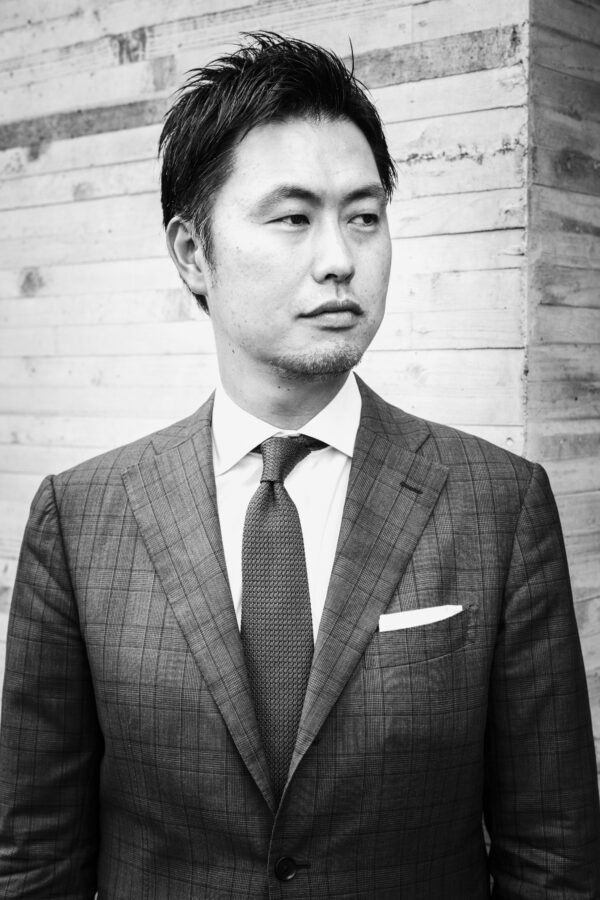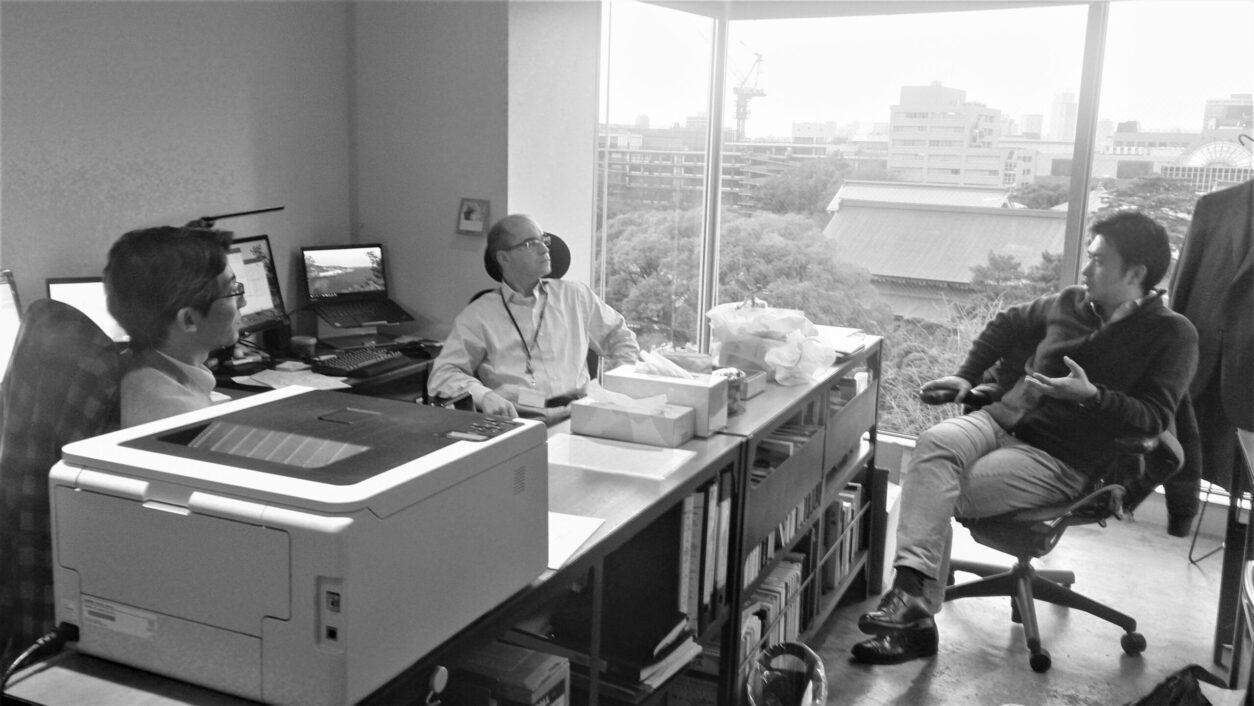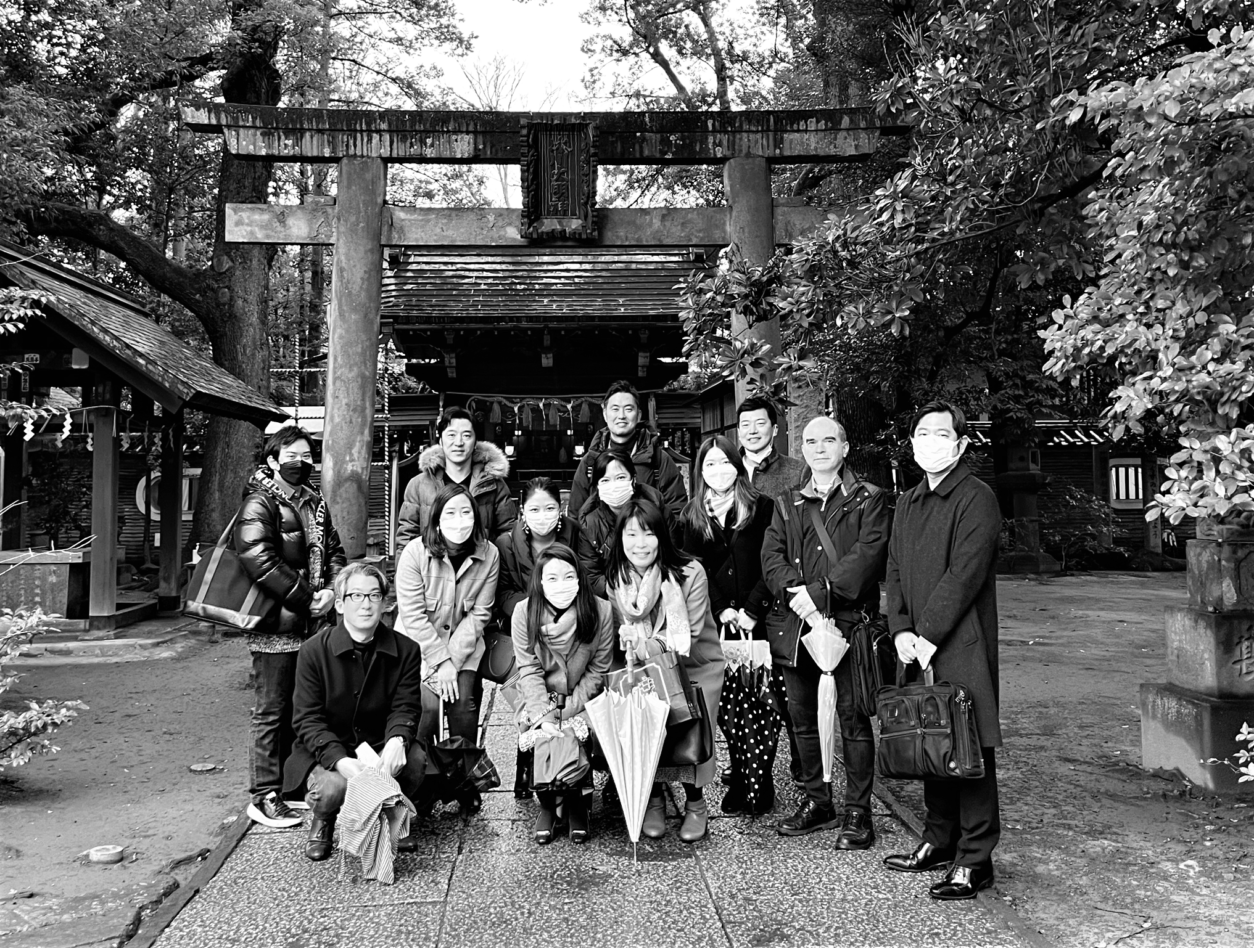IN MEMORIAM OF MANGYO KINOSHITA
MANGYO KINOSHITA
(1976 – 2023)

Our dear friend, mentor, and colleague Mangyo Kinoshita died on July 9, 2023, following a brief and brutal bout with that cruelest of cancers, pancreatic cancer. He was 46.
Anyone familiar with the corporate legal community in Tokyo knew that Mangyo was one of its pillars, and anyone who worked with or opposite him quickly understood why. His premature departure leaves a tremendous void in our community.
The wanderer
Mangyo was by no means destined to be a lawyer. His father was a lawyer, but Mangyo devoted his energies at Keio High School to playing center for the American football team. His coach warned him that if he wanted to play on the Keio University football team he would have to bulk up. He ate and ate and ate, but was just not able to put on the requisite heft to fill his 185-cm frame.
Freed from the rigors of football upon entering university, Mangyo turned his focus to his studies, which he discovered he was good at. Despite not being accepted to the law faculty at Keio (he readily admitted that he did not have the grades), he passed the “old” bar exam on his first try while still a university student (the passage rate at the time was under 3%, and considerably lower for first-time test takers still in university (about 0.2%)).
Instead of following the conventional path of entering the Legal Research Institute – a two-year study course required of all future lawyers, judges, and prosecutors in Japan – immediately after passing the bar, Mangyo decided to go to the US at the age of 22 to improve his English, discover the world outside Japan, and think about what he wanted to do in life. Delaying entry into the Legal Research Institute is unheard of for ambitious lawyers in Japan and many questioned his decision, but Mangyo did not waver. He went to New York City, where he enrolled in an English school and began practicing karate (yes, in the US, of all places). He attributed the source of his remarkable fluency in English to that karate dojo.
The big-firm lawyer
Upon his return to Japan, Mangyo completed his studies at the Legal Research Institute and then made another unorthodox decision: he joined an international firm (Paul Hastings) at a time when junior Japanese attorneys did not join international firms. Mangyo wanted to show that it was possible for Japanese attorneys to succeed in these firms, and succeed he did, making partner at O’Melveny & Myers and then at White & Case. Along the way, he has been recognized as a leading M&A and corporate practitioner by Legal500 since 2011, by Chambers since 2014 (where he is the youngest lawyer in Band 2), and more recently, as one of the top 100 lawyers in Japan by Asia Business Law Journal.
Among Mangyo’s proudest accomplishments were his pro bono activities. He was a leader of pro bono efforts at O’Melveny and White & Case, he served as the chair of the Community Service Committee of the First Bar Association of Tokyo, and he was treasurer, and then Asia Liaison Officer, of the pro bono committee of the IBA. He handled the issuance of Japan’s first ever social impact bonds by the Japan Foundation as part of the reconstruction of the Tohoku area after the Great Tohoku Earthquake of 2011. On the first day back in the office following that earthquake, Mangyo sent an email to all attorneys in the O’Melveny office instructing them to be at the office at 7:00am to return to the shelves all the books in the library that had been knocked to the ground. He explained that the office librarian had supported the attorneys for years and it was time for them to reciprocate.
The small-firm lawyer
In 2015 Mangyo began looking into the professional trajectories of the trailblazers who created today’s great firms – both Japanese and international – in Japan, and realized that he was approaching the age of those lawyers when they had made their move. He started imagining the firm that he felt was missing and that would allow him to leave his mark on the legal landscape: a boutique firm made up of Japanese and international lawyers specialized in cross-border transactional matters. Thus was created southgate, a three-lawyer firm and the first firm jointly established by Japanese- and foreign-qualified attorneys in Japan.
Mangyo took on new dimensions at southgate. He delighted in bringing in clients, no matter how small the legal fees, if he thought that southgate could provide value that other firms could not. He adopted black and white as the firm’s colors to cut down on printing costs and stopped taking taxis, favoring the metro and the DoCoMo Bike Sharing Network. He stopped flying business class. He took up various martial arts and resumed wakeboarding at Yamanaka-ko. He became a director of Gojo, a microfinance company he had represented since its establishment, and worked to guide them through their planned IPO. He marveled that for the first time in his life, he was able to finish a bedtime story without falling asleep before his children. And rather than put his youngest son in juku (cram school) to prepare for admission to a competitive preschool, Mangyo created and implemented a study program consisting of field trips and other non-classroom activities (his son was accepted).
And of course, Mangyo continued practicing law at the highest levels. He never took advantage of his reputation, talent, skills, and imposing physical stature to browbeat others to get his way. He appealed to logic, decency, and common sense in a reassuring voice, always trying to “make the pie larger” rather than playing a zero-sum game. Mangyo was constantly on the lookout for practical solutions (for example, after hearing “Mangeeo,” “Mango” and other corruptions of his name one time too many at Starbucks, he adopted the name Ken in that and similar establishments in the US). He would gently push back when clients took unreasonable positions, but if they insisted, Mangyo was able to convey the clients’ points as if they were perfectly reasonable and, in the end, convince the other side to accept them.

southgate office in Kudanshita at the firm’s founding – February 2016
The mentor
Mangyo’s motivation in creating southgate was to benefit not only clients, but lawyers too. He wanted southgate to be a platform for enterprising lawyers interested in having a cross-border practice, but in a smaller firm setting. He took great interest in supporting the careers of all who joined southgate (and even those who did not), routinely sharing opportunities with others. When contacted by a publication to write an article, he would recommend a colleague to write the article and receive credit as author, and when being interviewed by the Nikkei or other publications about a legal development, he would have a junior attorney on the call and ask the reporter to quote the junior attorney, not Mangyo.
Mangyo was so proud of his alma mater, Duke University Law School, that he convinced two of his southgate colleagues to enter their LL.M. program. When he heard associates in the firm talking about their TOEFL scores, Mangyo took the test himself to see how he would do, and was bemused to see that despite his 20 years of practicing law in English, he would not have met the cutoff score of many LL.M. programs.
He made everyone around him better – better lawyers, better leaders, better business developers, and better people.
The cancer patient
Mangyo was ever the optimist, a trait he was somehow able to preserve during his eight-month battle with cancer. When he first received his diagnosis, he accepted it as another stage in his life (son, student, lawyer, husband, father, firm founder, cancer patient), an opportunity to discover a different side of him and live a new experience. He was clear-eyed about the grim odds, but in his work-related communications, he never once betrayed the fear and desperation that must have been wracking his interior. He continued to respond to work emails until days before his death – not on account of an obsession with work, but probably because he was bored at the hospital and doing something he excelled at must have taken his mind off less pleasant thoughts. And he littered his messages with laughter emoji (笑) and apologies for the burden his condition was placing on us.
One of his last messages were words of encouragement to us (and of course, nothing about him): “My favorite quote – Inches make champions by Vince Lombardi. Inch by inch で、すこしずつでも前に進めるように、事務所のこと、宜しく頼みます!”
Mangyo is survived by his wife (also his college sweetheart), his three children, his sister, his parents, and countless friends in the legal, business, and football communities inside and outside Japan.
It is said that a person really dies when people stop talking about him or her. By this measure, Mangyo will outlive us all.

Hatsumoude at Akasaka Hikawa Shrine – January 2023
Timeline
1976 – Born in Komatsu City, Ishikawa Prefecture
1995 – Graduated from Keio Senior High School
1999 – Graduated from the Department of Political Science, Law Faculty, Keio University
2001 – Completed studies at the Legal Training and Research Institute
2001 to 2005 – Paul Hastings (Tokyo)
2005 – Obtained LL.M. from Duke Law School
2005 to 2013 – O’Melveny & Myers (Tokyo and New York)
2013 to 2015 – White & Case (Tokyo)
2016 to 2023 – southgate (registered association)
Achievements
Admitted to Japanese Bar in 1998
Class speaker for LL.M. class at Duke Law School graduation (first speaker ever from Japan): 2005
Admitted to California Bar: 2005
Recipient of O’Melveny Values Awards (first ever Japanese attorney recipient): 2017
Recognized by Chambers Asia Pacific and Global in Corporate/M&A: 2014–2023
Recognized by Legal500 in Corporate/M&A: 2011-2014 and 2016-2023
Ranked among Japan’s Top 100 Lawyers by Asia Business Law Journal: 2020-2023

